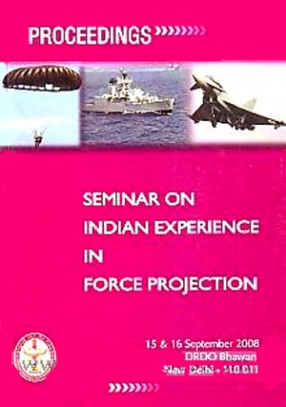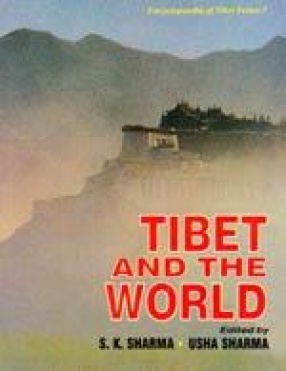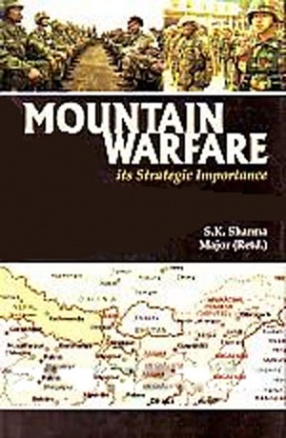
S K Sakesena

38 books























This book then is devoted to the rational interpretation and justification of those rights of the individual which society must respect and which it is desirable for our age to strive to enumerate more fully. Many schools of thought are represented, each of which brings to the whole its particular view and justification of individual rights, leaning in various degrees towards the classical, or the revolutionary, interpretation; it is not the first time that ...



The Dalai Lama is regarded as the spiritual and temporal leader of the Tibetans. The present volume Dalai Lama and Tibet presents in detail the magnificent role he has played in Tibetan history.

India and Tibet have been not only geographically neighbouring countries. There are deep-rooted religio-cultural, ethnic and commercial ties between the two countries. Buddhism, originated in India, flourished in Tibet. Kailash and Mansarover, having great religious sanctity for Hindus are situated in Tibet. Before Chinese aggression in Tibet, the mutual commercial activities between the two countries have significant role in the economy-particularly those of the ...

Tibet is situated on a high plateau surrounded by mountain passes. Covering an area in excess of 2.5 million square kilometers, it borders of India, Nepal, Bhutan and Burma to the south, Eastern Turkistan to the north and China on the east. Owing to its unique physical features, it occupies the most strategic position in Central Asia. The present volume History and Geography of Tibet presents in-depth the chequered history and geographical ...

Tibet is situated on a high plateau surrounded by mountain passes. Covering an area in excess of 2.5 million square kilometres, it borders of India, Nepal Bhutan and Burma to the south, Eastern Turkistan to the north and China to the east Owing to its unique physical features, Tibet occupies not only the highest but also the most strategic position in Central Asia. Viewing Tibet and the Tibetan people in a global perspective, the present volume Tibet and the ...

Tibet, owing to its unique physical features, occupies not only the highest but also the most strategic position in Central Asia. Covering an area in excess of 2.5 million square kilometers, it borders of India, Nepal, Bhutan and Burma to the south, Eastern Turkistan to the north and China on the east. Rich in minerals and with a variety of flora and fauna, Tibet is also the source of many great rivers-the Tsang-po (Brahmaputra), Senge Khabab (Indus), Drichu ...

This encyclopaedia focuses on two Himalayan Kingdoms Sikkim (now a Indian state) and Bhutan and delves deeply into the multi-facet aspects like political treaties, covenant or agreements signed between the two countries and British India, their history, geography and travels and social and cultural heritage. The volume has traversed into the unsurpassable domains and terrains through the accounts of early travellers to these Himalayan Kingdoms. Both the kingdoms ...

Nuclear tests conducted by India recently as a deterrent meant only for self-defence created a lot of confusion regarding nuclear disarmament policy initiated by the first Prime Minister of India Jawaharlal Nehru and followed by the successive Prime Ministers and the present government led by Atal Behari Vajpayee. The Documents on India's Nuclear Disarmament Policy is an attempt to compile authentic and comprehensive published documents and other authoritative ...

The work deals with several phases of Akbar (1542-1605), his career, his innovation in religious affairs, i.e. concept of Din-i-Ilahi, nine gems of his Court, his land revenue system, the royalty at the Mughal Court, first Jesuit Mission to his Court, social condition and last but not the least personality and the assessment as the Emperor of Indian sub-continent.

The theme deals with Aurangzeb's career, his territorial expansion, the government of Multan and Sind, the Subah of Allahabad, his Viceroyalty of the Deccan, Rajput policy, his two Farmans, political views of the Emperor, legends from the Punjab, the sword of Aurangzeb, his revenue system, development of agriculture and industry, trade, social position of women and last but not the least his last days.

Babar, the founder of the Mughal Empire in India, proved to be the best general and administrator of his time. At a fairly young age he had to deal with intricate problems in Central Asia and achieved remarkable success. His greatest achievement indeed was the conquest of major part of India. He therefore occupies a unique position in the annals of our history. His character and personality have been depicted in this work. Undoubtedly this book would be useful ...


The theme deals with Humayun, his career as a young son of Babar as well as an army commander, his succession to the throne soon after his father's demise, relations with Kamran, his younger brothers, his experiences in Iran and Rajputana, his relationship with Maldeo, affairs of Gujarat, Malwa and Bengal, his war with Sher Shah Suri, and expulsion from India, his exile and Sher Shah Suri.



Learning can be defined as 'the ability to modify behaviour as a result of experience'. This ability allows us to adapt to changing environmental conditions. Everyone is involved in the learning process for at least a quarter of his life; some are much more than that. Understanding the basic concepts of learning and how the brain actually functions leads to better performance both as a teacher and as a student. This book describes key learning concepts that are ...

There is a set of principles that characterizes the pattern and process of growth and development. These principles or characteristics describe typical development as a predictable and orderly process; that is, we can predict how most children will develop and that they will develop at the same rate and at about the same time as other children. Although there are individual differences in children’s personalities, activity levels, and timing of developmental ...


